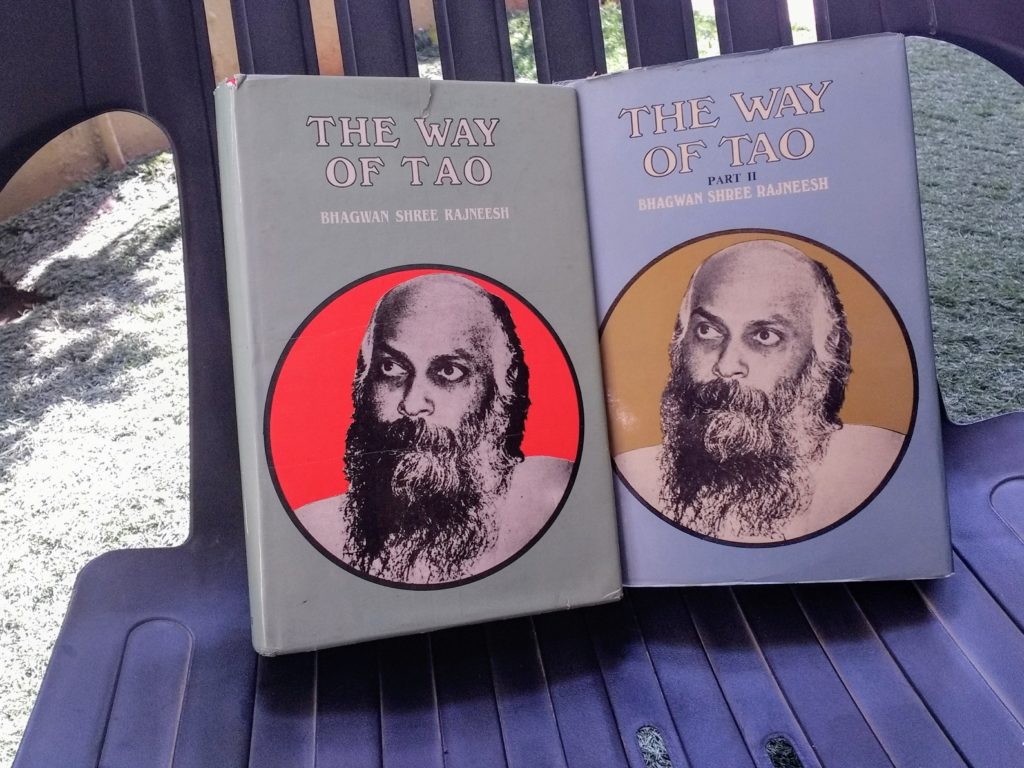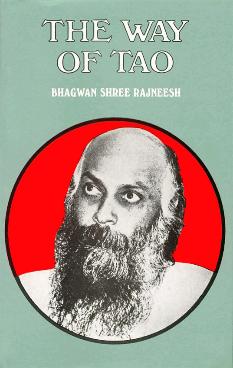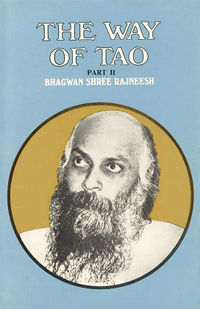
The Way of Tao I en II bevatten Osho’s onnavolgbare commentaren op de Tao te Ching van Lao Tse. Ze betreffen de waarheid die niet in taal uit te drukken is. Het gaat hier om een klein boek met 81 korte hoofdstukken door Lao Tse (571 v. Chr.) die de top van de ervaring van deze wijze omvat. Osho heeft terecht gezegd: “Het is waar dat wat Lao Tse gezegd heeft, 2.500 jaar oud is. In zekere zin is het echter zo nieuw als de morgendauw.” Het pad is absoluut onbetreden, niet gevolgd. De oude wijzen openbaarden hun kennis in de vorm van stellingen en mantra’s. De leringen doen ons aan Kabir denken met zijn beheersing van de eenvoud en het mysterieuze van het leven. De boeken ‘The Way of Tao I en II” zijn in Europa vrijwel niet te vinden, maar wel in India of via Amazon
The Way of Tao
“Tao-Teh-King” or The Way of Tao as it is called here, is a small book in 81 brief chapters by Lao Tse (571 B.C.) comprising the cream of the experience of the sage. Osho has rightly said: “It is true that what Lao Tse has said is 2.500 years old; but in a sense it is new as the morning dew.” The path is absolutely untouched, unused. The ancient sages revealed their knowledge, their philosophy in the form of maxims and seed-mantra’s. The teachings remind us of Kabir in his patronage of simplicity and mysteriousness of life. Having absolute detachment and exclusive power of identifying himself with anyone, Osho lives the life sage Lao-Tse and reveals.

Review Tao I en II
Anyone who have read Tao De Ching MUST read this 2 volumes book by Bhagwan Shree Rajneesh (aka Osho) otherwise you will not understand the real meaning of Tao De Ching because only an enlightened Master or Mystic with the same consciousness as the original Lao Tzu 2,500 years ago can or are qualified to intrepret its meanings of the 5,000 Chinese characters. I have read nearly all, I said nearly because over the course of 46 years and fumbling through dozens of the translated version of the Tao De Ching in the English Languages by various renowned authors and translators, I finally found the real Master himself the original Lao Tzu who is reincarnated in the physical form of Osho’s to gave the real meaning of the words of the Sage who wrote the book.
Osho: I am Lao Tzu
The first chapter of the book start with Bhawan Shree Rajneesh saying: “I am Lao Tzu, Lao Tzu is me and when I am speaking it is Lao Tzu speaking. Lao Tzu and me is one” I first though that this must be another imposer or idiot who say such phrases but when you continue reading through half of the book or to the end of the first volume. then you will realise that this fellow really is Lao Tzu himself saying it through his voice and body after 2,500 years. Any who miss this book certainly misses the real meaning of Lao Tzu’s Tao De Ching

IMPRESSION of the WAY of TAO I
The eternal, unchanging tao
THE ABSOLUTE TAO
THE TAO THAT CAN BE TRODDEN
IS NOT THE ENDURING AND UNCHANGING TAO.
THE NAME THAT CAN BE NAMED
IS NOT THE ENDURING AND UNCHANGING NAME.
Those who have known, not by words, not by scriptures but by actually living life, from amongst those very few, Lao Tzu is one. And from amongst those yet fewer persons, who having known, have ceaselessly endeavoured to reveal what they have known, Lao Tzu is one. But the very first experience of those enlightened ones, who have tried to express what they have known is, that:

TRUTH is INEXPRESSIBLE
whatever is expressible is not Truth. That which can assume form, invariably loses its spiritual power (of the Formless).
Now if someone wishes to make a picture of the sky, this can never be. Whatever picture is made, it will not be of the sky, for space is that which embodies everything. A picture cannot contain anything; it, in itself is surrounded by space. So Truth expressed in words, will be like the skies depicted in a picture. No bird can fly in the sky of a picture, no sun comes out in the morning or stars at night.
Conveying the Truth without Words
It is dead for all purposes and the sky only in name. The sky cannot be in a picture. The greatest difficulty that a person encounters when he sets forth to express Truth is, that no sooner Truth is converted into words, it becomes Un-Truth. It becomes just what it is not. Then what was to be conveyed, remains unsaid; and what was not to be conveyed, is given voice. Lao Tzu starts his very first line with this statement.

TAO is FULL OF MEANING
Tao is a peerless word. Try to understand its full meaning so we can proceed with ease. There are many meanings of Tao. The deeper a thing becomes, the more meanings it develops; and when a thing becomes multi-dimensional, it is but natural that it becomes more intricate. One interpretation of Tao is: “The Way.” But, all paths are bound and fixed! What sort of a path is Tao? It is like the path that a bird makes; in the skies as it flies – the path is formed but it is not fixed. All other paths leave their marks behind, which makes it easy for others to follow. Tao is a path like the bird makes in the skies – there are no footprints left behind for the convenience of others to follow. If we visualize a path that is unconstructed, a path where there are no footprints, a path that no other person can create for you – you travel and as you travel the path is formed – then we can interpret Tao as: ‘The Way’. But such a path we see nowhere! Therefore, is it proper to call Tao – ‘The Way’?
TAO: THE PATH is the GOAL
This however, is one dimension of Tao. Now let us take another meaning of the Path. A path is that which takes us to a destination. A path is that which joins us to the destination. But Tao is not such a path. When we walk along a road and reach the destination, both the road and the destination are connected to each other. In fact the destination is the last end of the road and the road is the beginning of the destination. Therefore, the path and the goal are not two different things – they are joined allied to one another. The road cannot be without a destination, nor can the destination be without a road. But Tao is a path that is tied to no destination. When a destination is connected with a path, the length of the journey is known. So the traveller knows the distance to the destination. But Tao is such a path where the traveller attains his destination at the very place he stands! Therefore, Tao cannot be likened to the general concept of a path. It is a path where we attain the destination from the very place we stand upon. It can also be that we travel for millions of births and not attain it. Invariably then, Tao is a different kind of a path. So one meaning of Tao is ‘The Path’ but in a very intrinsic sense – and with very many conditions.

TAO: RELIGION is the ULTIMATE LAW THAT HOLDS ALL EXISTENCE
Another interpretation of Tao is ‘Religion’. But Religion not in the sense that we generally understand. Religion here is what the ancient Rishis meant. Religion means the Regulation that holds all within itself. The Ultimate Law that holds all Existence, is the Tao Religion. And this Religion is not akin to the Hindu, Islam or the Buddhist and Jain religions. Religion is the Absolute Law of Existence. Religion means the Eternal Law of Life. But all laws are limited. Tao is a Law that has no boundaries.
In fact, all boundaries pertain to death; there are no limitations to Life. Dead things alone are limited.